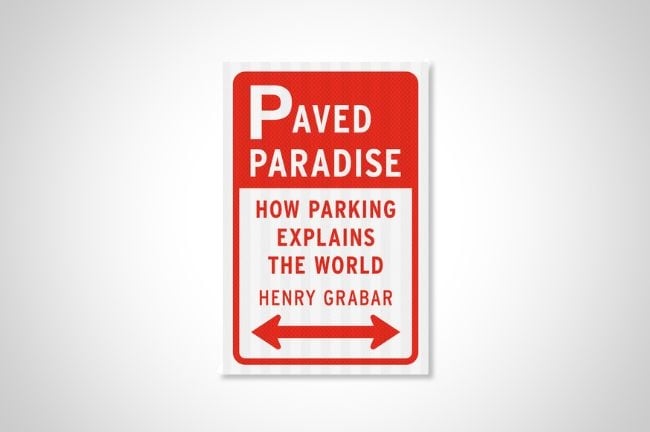You have /5 articles left.
Sign up for a free account or log in.

Penguin Random House
For Father’s Day, my daughter took me on a walking tour of Princeton and offered to pay for any book I wanted at Labyrinth Books. I picked Paved Paradise: How Parking Explains the World, by Henry Grabar. My wife thought that was the most preposterous thing she had seen in years.
It’s worth reading.
Building on Donald Shoup’s earlier The Hidden Cost of Free Parking, Grabar argues that if you look at parking as a use of land, we have it backward. In expensive cities, the most desired parking—curbside—is free or nearly free, while the least desired parking—garages—is expensive. That leads to drivers circling streets looking for open spaces. Over time, exceptions to parking rules have multiplied, each involving new levels of grift and deception. The chapter on the people who run parking garages is worth the entire book in itself: although Grabar doesn’t make the comparison, it reminded me of the economists’ idea of the resource curse: when wealth derives from a scarce asset that’s just there, rather than being steadily produced, then competition is displaced from reward to internal politicking and/or theft.
Grabar notes that the cities with the most residential demand and the highest rents tend to be the ones with far fewer parking spaces per residence than current laws typically allow. That’s because they were built before we started to base building requirements on parking. New York, Boston, D.C., San Francisco, Austin—these are all lively places with high rents and tight parking. I can attest that part of what my son loves about living in New York City is being car-free. There’s no need for one; nearly everything is walkable, and what isn’t walkable can be reached by subway.
From a land-use perspective, too, it’s perverse that some of the most valuable land in America goes at market rates if you want to live there but is free if you park a car there.
In many wealthy areas, too, Grabar notes that wealthy residents have used parking mandates as weapons to defeat affordable housing proposals. Require enough parking spaces per unit and the cost of construction gets high enough that it’s not worth building anymore.
Grabar recommends a host of policy changes, most of which involve decentering parking in land use and trying to get the prices right. Make curbside parking expensive, and people will be more willing to pay for garages, thereby reducing traffic from people circling blocks looking for spaces. (More will probably also switch to transit or e-bikes, depending on context.) Reducing the parking ratios required for stores, restaurants and the like can make for denser development, which makes places more walkable. He even ventures (bravely) into housing policy, noting that moves to allow large-scale conversion of garages into dwelling units in California represents a badly needed shift from housing cars to housing people.
There’s a lot to like. I’m only scratching the surface here.
He mentions in passing that one reason so many Americans hold nostalgia for college campus life is that it’s one of the few times that they’ve lived in walkable settings. There’s truth to that. I remember the year in grad school when I lived about 10 minutes by foot from the building where I taught my classes: I could roll out of bed around 7:30, teach at 8, teach again at 9:30 and be back by lunch. It was glorious.
From a community college perspective, parking is more fraught. Most community colleges don’t have dorms, and even those that do typically only house a small fraction of their student body. Mass transit options often aren’t what they could be, particularly outside large cities. Some colleges use parking as a revenue stream, separating lots by status (faculty parking, student parking, etc.) and relying on tickets to pay the bills. Others treat parking more like shopping malls do. I used to comment, ruefully, that the upside of enrollment decline was that at least it solved the parking crunch.
With COVID, of course, the game changed. Parking lots were repurposed. Restaurants claimed them for outdoor dining. Colleges used them for graduations. Churches used them for services. Instead of falling into the category of the unthought, the culture rediscovered them as uses of land that could be used in other ways. As the culture has tried to put the pandemic behind it, some of those new uses have proved so popular that they’ve stuck. I consider that a hopeful sign.
“Commuter” colleges were largely built in the 1960s, when suburban shopping malls and plenty of free parking were all the rage. Over the last few years, their parking lots have been embarrassingly sparse. We can see that as waste, or we can see it as possibility. Grabar offers the latter. I couldn’t agree more.






